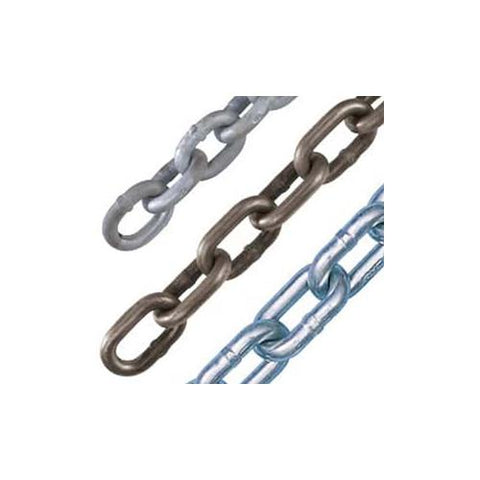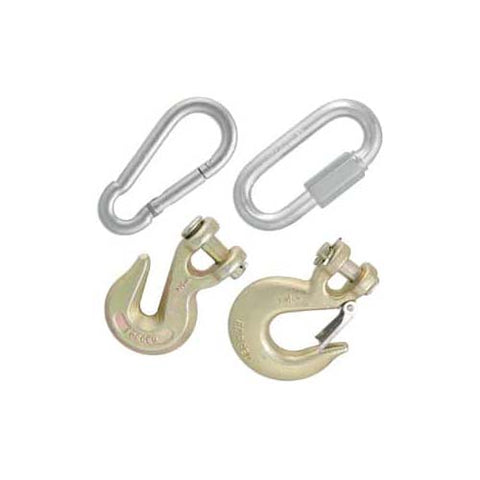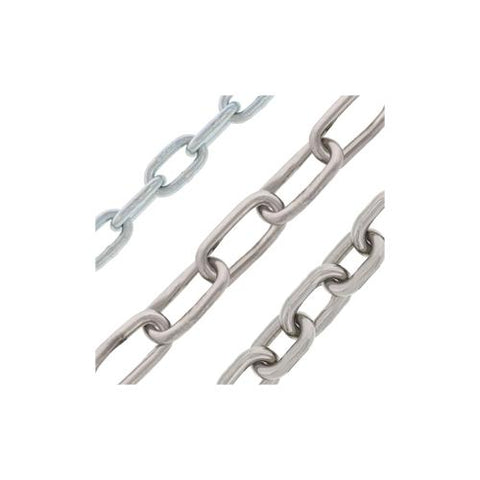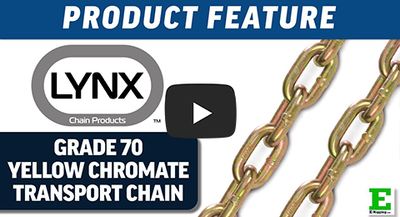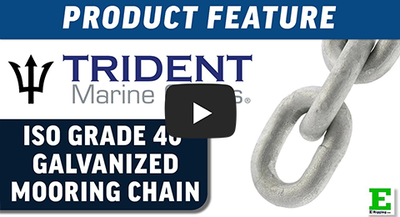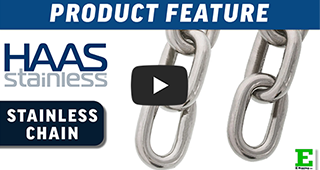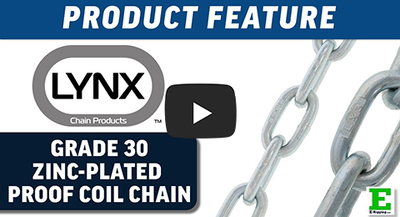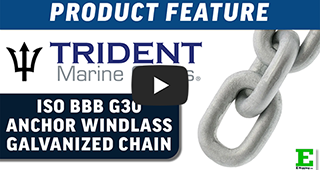
At E-Rigging, we offer a wide variety of rigging chains and chain fittings from trusted brands like Peerless, Lynx, Pro-Lift, and HAAS Stainless. Our selection includes galvanized chains, stainless steel chains, and Grade 70 transport chains, as well as durable chain fittings such as clevis hooks, grab hooks, clevis links, shackles, and quick links. Designed for demanding applications like marine use, construction, and load securing, our products ensure reliability, safety, and performance in every job. Have questions about our products? Contact our customer service team.
Related Products
Frequently Asked Questions - Rigging Chain & Chain Fittings
At E-Rigging we offer a large variety of rigging chain to fit almost any application.
- Galvanized chain: Coated with zinc to resist rust, these chains are great for outdoor applications like construction and farming, where moisture is present but cost-efficiency is needed.
- Stainless steel chains: Ideal for marine environments or corrosive conditions, stainless steel offers superior corrosion resistance, making it the top choice for boating or coastal construction.
- Grade 70 chains: Known as transport chains, these are heat-treated for high strength and used for load securement in the trucking industry. They’re strong but not suitable for overhead lifting.
Zinc-plated chains: These chains are coated with a thin layer of zinc through a process called electroplating. The zinc layer offers basic corrosion resistance, but because the coating is thinner, it wears off faster in harsh environments. Zinc-plated chains are best suited for light-duty indoor applications or dry outdoor environments where moisture exposure is minimal.
Galvanized chains: In contrast, galvanized chains are coated with a much thicker zinc layer, usually through hot-dip galvanization. This process results in a more durable, weather-resistant coating, offering better protection against rust and corrosion in outdoor environments. Hot-dip galvanized chains are ideal for applications like farming, construction, and general outdoor use, where moisture or exposure to the elements is more common.
Not all rigging chains are suitable for overhead lifting. Grade 80 and Grade 100 chains are typically rated for overhead lifting applications, whereas Grade 30, 43, and 70 chains are not.
Galvanized chains are steel chains that are coated with a layer of zinc through a process known as galvanization. This zinc coating creates a protective barrier that helps prevent rust and corrosion, especially in environments exposed to moisture. Because of this, galvanized chains are commonly used for outdoor applications like fencing, agriculture, and construction, where resistance to weather conditions is crucial but a more affordable option is needed. However, while galvanized chains resist rust, they are not as durable in harsh or saltwater environments as other options.
Stainless steel chains, on the other hand, offer superior corrosion resistance due to their high chromium content, which naturally prevents rust without the need for a coating. This makes stainless steel the preferred choice for harsh environments like marine applications, where chains are frequently exposed to saltwater, chemicals, or extreme weather conditions. Stainless steel chains are also used in industries requiring hygiene and cleanliness, such as food processing and pharmaceuticals, as they resist both corrosion and contamination.
HAAS Stainless chain is sold by the foot. You may order multiple cuts of chain with the first cut free and a $2 charger per additional cut.
Regular inspection is key to ensuring the safety and longevity of your rigging chain. Over time, chains can wear out, corrode, or elongate, which can compromise their strength and performance. Here are the key signs to look for when determining if it’s time to replace your chain:
- Wear and tear: Inspect the chain links for any signs of excessive wear, especially on the contact points where the links connect. Worn or thinned links can no longer handle their rated working load limit (WLL), making the chain unsafe to use.
- Corrosion or rust: If you notice significant rust or corrosion on your chain, especially on galvanized or zinc-plated chains, it may be time to replace it. Corrosion weakens the chain’s structural integrity, particularly if it has been exposed to saltwater, chemicals, or harsh weather conditions.
- Elongation: Measure the chain to check for elongation (stretching). Chains that are elongated by more than 5% of their original length have been overstressed and should be replaced immediately, as they can fail under load.
- Cracked, bent, or deformed links: If any of the chain links are cracked, bent, or deformed, the chain is no longer safe to use. Damaged links can easily fail under pressure and should never be used in load-bearing applications.
- Fitting inspection: Don’t forget to inspect the chain fittings, such as hooks, shackles, or links, for signs of wear, rust, or deformation. These components should also be replaced if they show damage.
Rigging chains and fittings must comply with industry standards like ASTM, CMAA, and OSHA. Always refer to the manufacturer’s guidelines and applicable safety standards.
Galvanized chains are coated with a layer of zinc to protect them from corrosion. While they are resistant to rust, they can eventually rust over time, especially in harsh environments like saltwater or areas with high humidity. Regular maintenance and proper storage can help extend the life of galvanized chains.
